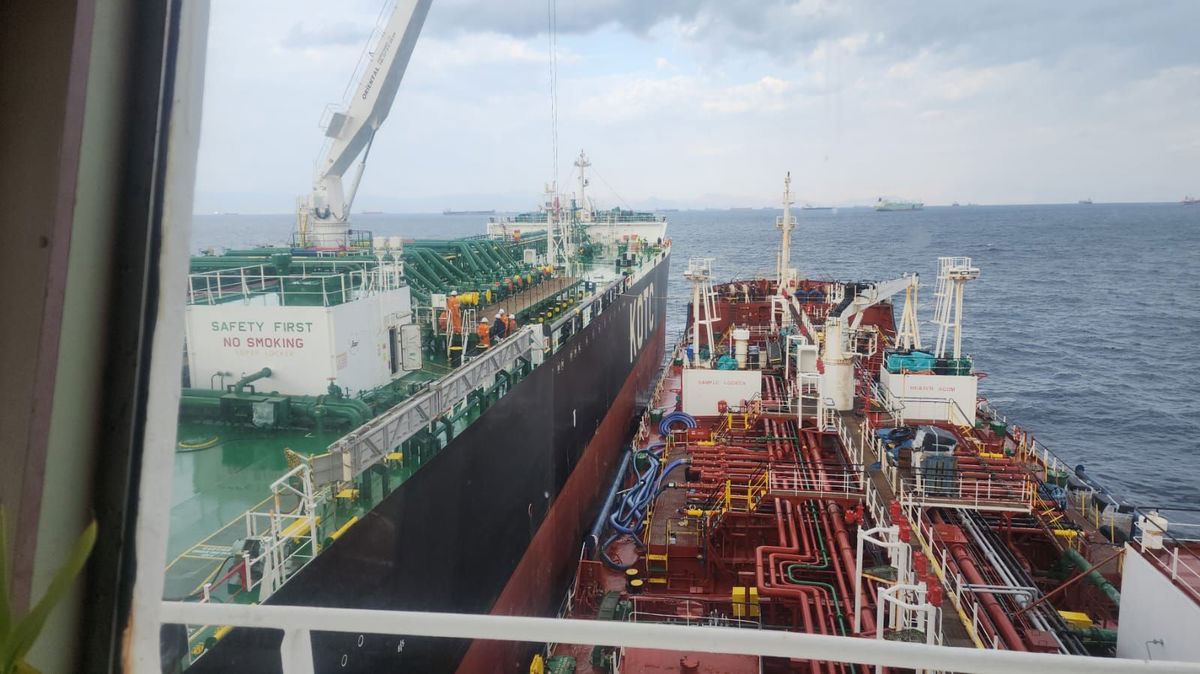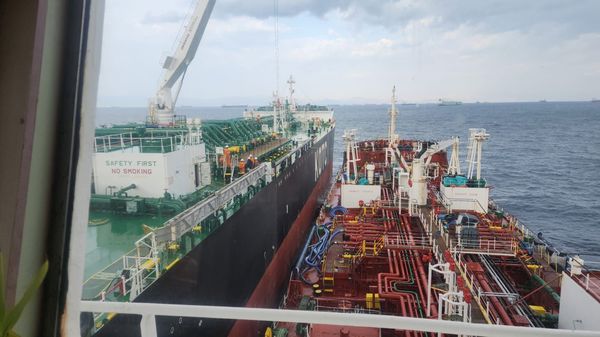Red Sea disruptions can raise vessels' GHG emissions by more than 70% - UNCTAD
Greenhouse gas (GHG) emissions from a Singapore-Rotterdam round trip could increase by over 70% due to Red Sea disruptions and rerouting via the Cape of Good Hope, a UN body has reported.
 MAP: Two different shipping routes from Singapore to Rotterdam. The shorter one runs via the Suez Canal, the longer around the Cape of Good Hope. ENGINE
MAP: Two different shipping routes from Singapore to Rotterdam. The shorter one runs via the Suez Canal, the longer around the Cape of Good Hope. ENGINE
Increased fuel consumption and speed are primarily responsible for higher GHG emissions when travelling via the Cape of Good Hope instead of the Suez Canal, the United Nations Conference on Trade and Development (UNCTAD) study found.
The Cape of Good Hope route extends the travel time between Asia and Europe by approximately 7,000 km or 14-24 days compared to the Suez Canal route.
UNCTAD notes that ships are likely to boost their sailing speed to compensate for the additional distance, estimating that a 1% increase in speed for a large container ship results in a 2.2% rise in fuel consumption.
An International Council of Clean Transport (ICCT) report estimated that burning 1 mt of VLSFO emits approximately 3.73 mt of carbon dioxide (CO2) on a well-to-wake basis. Based on this estimate, if a vessel consumes an additional 1,000 mt of VLSFO for a round trip from Singapore to Rotterdam while travelling via the Cape of Good Hope instead of the Suez Canal, it will emit approximately 3,730 mt of additional CO2 on a well-to-wake basis, over the course of the trip.
Similarly, a Sea-Intelligence report calculated that an increase of 1 knot in vessel speed, from 16 knots to 17 knots, will increase CO2 emissions by 14%.
In addition, shipping lines have been deploying “smaller, less fuel-efficient vessels” on Asia-Europe trade routes to phase in additional capacity to cater for the longer sailing distance, Alan Murphy, chief executive of Sea-Intelligence wrote in the report.
“On a TEU-basis, some of these smaller vessels see an increase in CO2 emissions of 141%, compared to conventional [ultra-large container vessels] ULCVs. Putting all three components together, could lead to CO2 emissions increases of 260% and 354%, to North Europe and Mediterranean, respectively,” Murphy said.
By Konica Bhatt
Please get in touch with comments or additional info to news@engine.online





